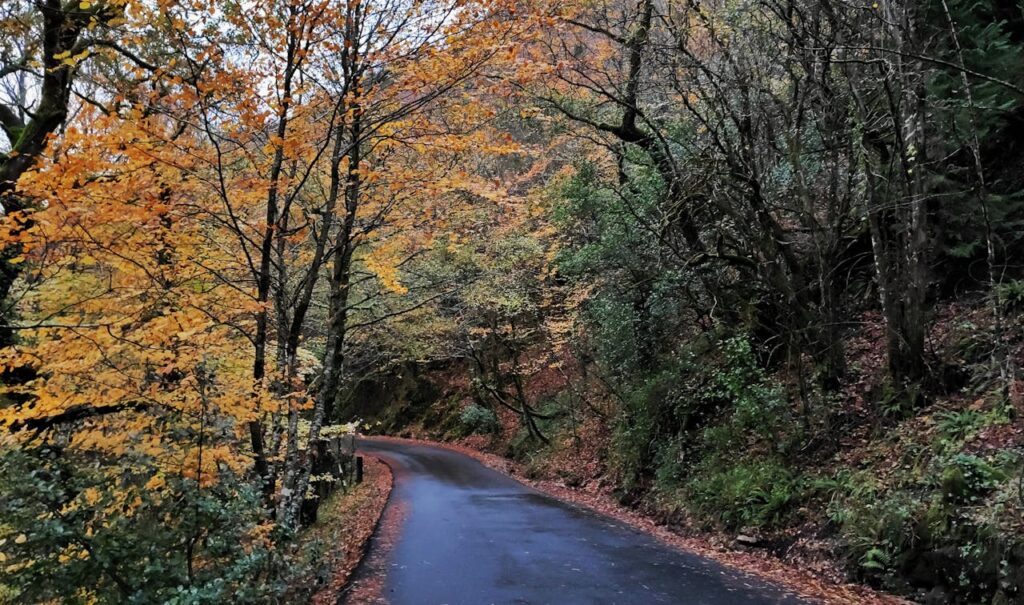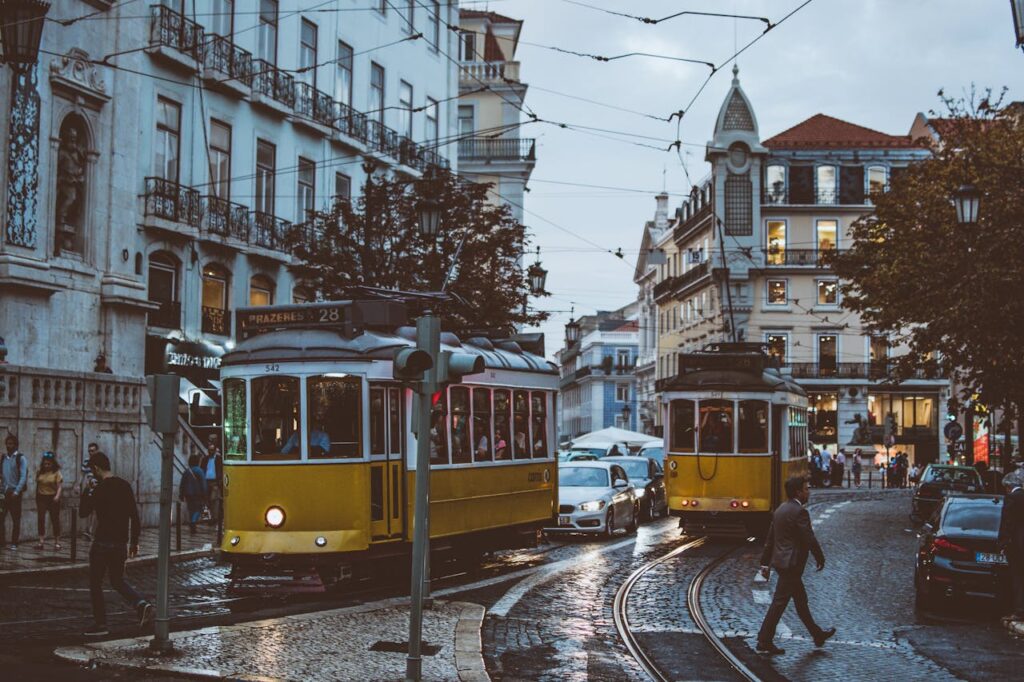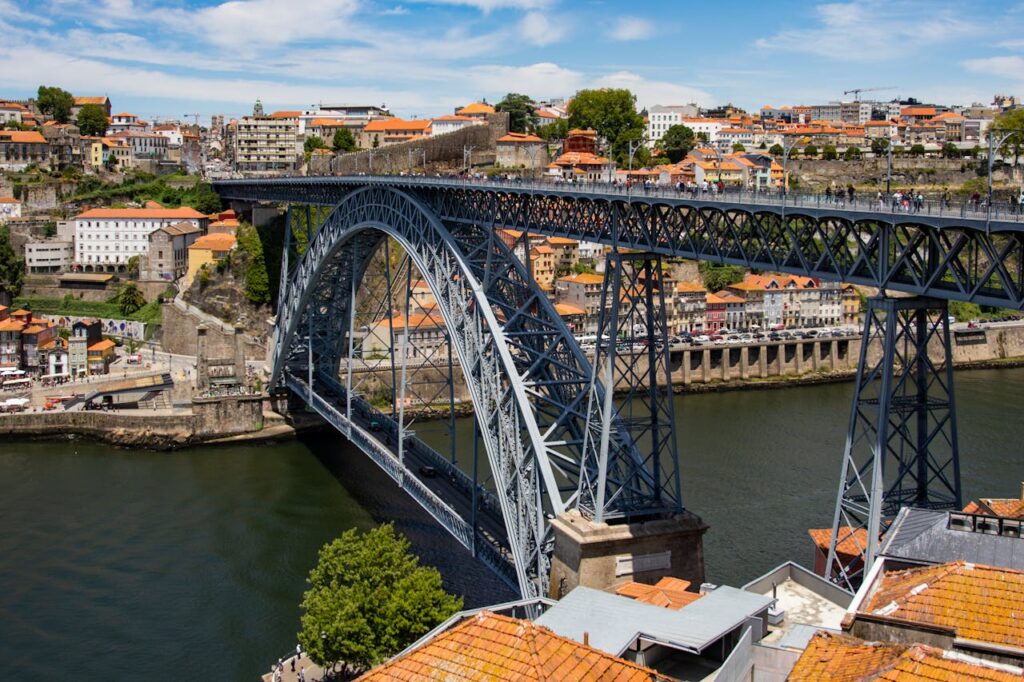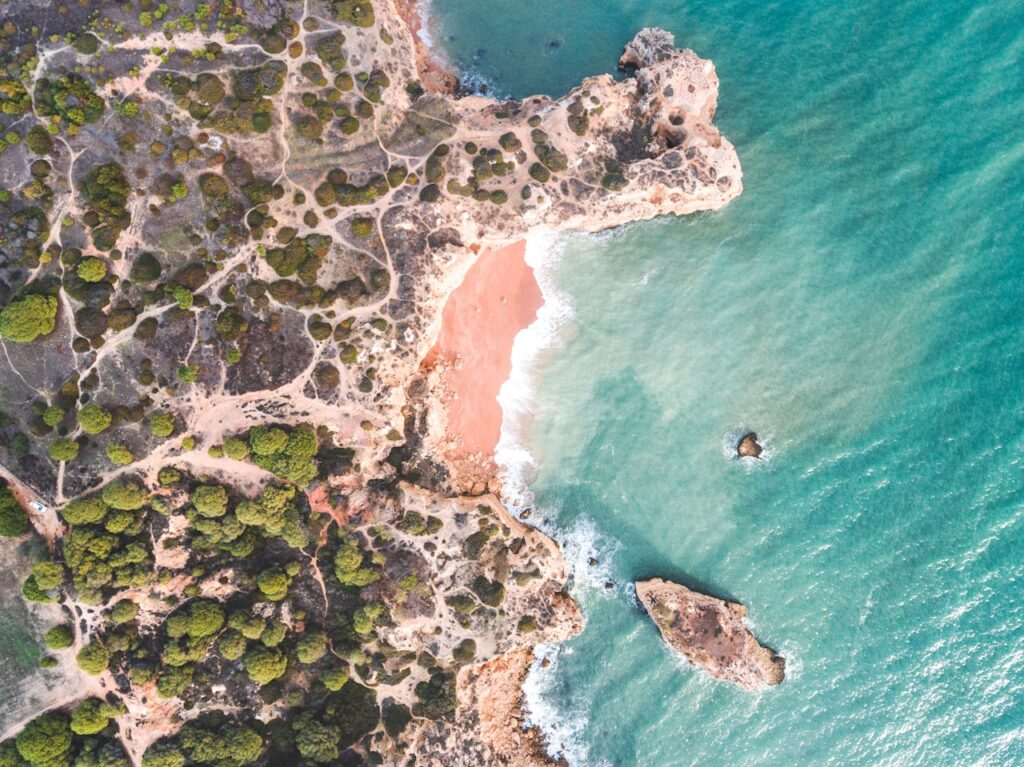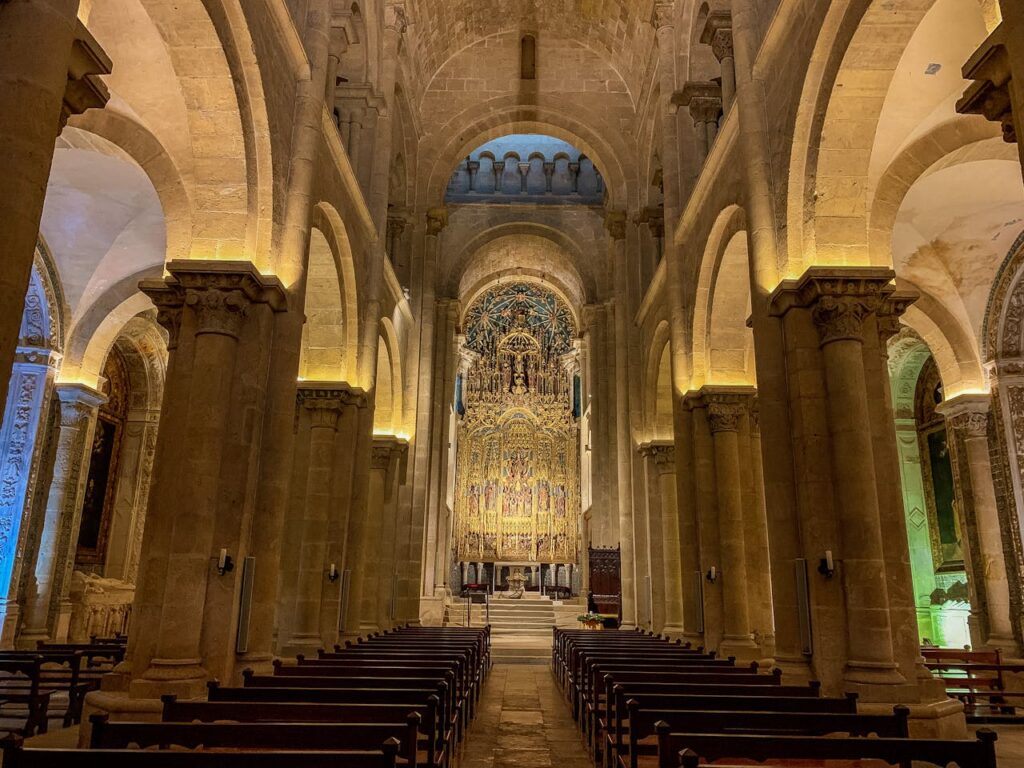Braga, one of Portugal’s oldest cities, is often referred to as the “Rome of Portugal” due to its rich history, numerous churches, and religious significance. Located in the northern part of the country, Braga is known for its stunning architecture, vibrant cultural scene, and beautiful surroundings. The city offers a perfect blend of historical landmarks, religious sites, and modern attractions, making it a captivating destination for travelers. Here are some of the best places to visit in Braga, Portugal:
Best Places to Visit
1. Bom Jesus do Monte
Bom Jesus do Monte is one of the most iconic religious sites in Portugal, famous for its monumental Baroque staircase and pilgrimage church. The sanctuary is set on a hilltop and features a beautiful staircase adorned with fountains, statues, and chapels depicting the Stations of the Cross. Visitors can either climb the 577 steps or take a funicular railway to reach the top, where they can explore the church and enjoy panoramic views of Braga and the surrounding landscape.
- Key Attractions: Baroque staircase, pilgrimage church, panoramic views.
- Activities: Climbing the staircase, sightseeing, photography.
- Location: Estrada do Bom Jesus, 4715-056 Braga.
2. Braga Cathedral (Sé de Braga)
The Braga Cathedral, also known as Sé de Braga, is one of the oldest cathedrals in Portugal, dating back to the 11th century. The cathedral showcases a mix of architectural styles, including Romanesque, Gothic, and Baroque. Inside, visitors can admire the beautiful altarpieces, intricate woodwork, and the tombs of important historical figures. The cathedral also houses a museum with a collection of religious artifacts, including relics, manuscripts, and sculptures.
- Key Attractions: Romanesque and Gothic architecture, religious artifacts.
- Activities: Religious exploration, historical sightseeing.
- Location: R. Dom Paio Mendes, 4700-424 Braga.
3. Sanctuary of Our Lady of Sameiro (Santuário do Sameiro)
The Sanctuary of Our Lady of Sameiro is another important pilgrimage site located on a hill overlooking Braga. The sanctuary, dedicated to the Immaculate Conception, features a beautiful neoclassical basilica and a statue of the Virgin Mary. The site offers breathtaking views of the city and the surrounding countryside. The sanctuary is a popular destination for both pilgrims and tourists, providing a peaceful and spiritual atmosphere.
- Key Attractions: Neoclassical basilica, panoramic views.
- Activities: Sightseeing, religious visit.
- Location: Avenida Nossa Senhora do Sameiro, 4715-616 Braga.
4. Archbishop’s Palace (Paço Arquiepiscopal)
The Archbishop’s Palace is a historic complex that has served as the residence of the archbishops of Braga for centuries. The palace consists of three main sections: the Old Palace, the New Palace, and the Medieval Wing. The complex features a blend of architectural styles, including Gothic, Renaissance, and Baroque. The palace gardens, known as the Santa Barbara Garden, are beautifully landscaped and offer a serene setting for a leisurely stroll.
- Key Attractions: Gothic and Baroque architecture, Santa Barbara Garden.
- Activities: Exploring the palace, walking in the gardens.
- Location: Praça do Município, 4700-317 Braga.
5. Arco da Porta Nova
Arco da Porta Nova is a historic archway and one of Braga’s most recognizable landmarks. Built in the late 18th century, the arch was designed as a grand entrance to the city. The structure features a mix of neoclassical and baroque architectural elements, with an ornate facade and a clock. The arch is located in the heart of Braga’s historic center and serves as a gateway to the old town, leading to narrow streets filled with shops, cafes, and historic buildings.
- Key Attractions: Neoclassical and baroque architecture.
- Activities: Photography, exploring the old town.
- Location: Rua Dom Diogo de Sousa, 4700-424 Braga.
6. The Biscainhos Museum (Museu dos Biscainhos)
The Biscainhos Museum is housed in a beautiful 17th-century palace and showcases the lifestyle of the Portuguese nobility during the Baroque period. The museum’s exhibits include period furniture, decorative arts, ceramics, and religious artifacts. The palace’s interior features ornate ceilings, frescoes, and gilded woodwork. The museum also includes a picturesque garden with fountains, statues, and manicured flowerbeds, providing a glimpse into the opulent lifestyle of the past.
- Key Attractions: Baroque palace, period furniture, decorative arts.
- Activities: Museum visit, historical exploration.
- Location: Rua dos Biscainhos 47, 4700-415 Braga.
7. Roman Thermae of Maximinus (Termas Romanas de Maximinos)
The Roman Thermae of Maximinus is an archaeological site that offers a fascinating insight into the ancient Roman presence in Braga. The site includes the remains of a Roman bath complex, complete with heating systems, pools, and changing rooms. The thermae were discovered in the 1970s and have since been excavated and preserved. Visitors can explore the ruins and learn about the Roman bathing culture and its significance in ancient society.
- Key Attractions: Roman ruins, archaeological site.
- Activities: Historical exploration, archaeology.
- Location: Rua Doutor Rocha Peixoto 22, 4700-028 Braga.
8. São Martinho de Tibães Monastery
The São Martinho de Tibães Monastery, located just outside Braga, is a former Benedictine monastery with a rich history dating back to the 11th century. The monastery features a stunning baroque church, cloisters, and a library. The interior is adorned with elaborate altarpieces, azulejos (Portuguese tiles), and gilded woodwork. The monastery’s extensive grounds include beautiful gardens, orchards, and a tranquil lake. The site is a peaceful retreat and a great place to learn about monastic life in Portugal.
- Key Attractions: Baroque church, azulejos, monastery gardens.
- Activities: Religious exploration, walking.
- Location: Rua do Mosteiro 59, 4700-565 Braga.
9. Braga Municipal Stadium (Estádio Municipal de Braga)
Braga Municipal Stadium is a unique football stadium known for its modern design and stunning location. Built into the side of a quarry, the stadium features two main stands, with the rock face serving as a backdrop. The stadium, also known as “The Quarry,” is home to the S.C. Braga football club and has hosted numerous international matches and events. Visitors can admire the architectural ingenuity and enjoy the scenic views of the surrounding landscape.
- Key Attractions: Modern architecture, unique stadium design.
- Activities: Attending football matches, sightseeing.
- Location: Avenida Dom João II, 4715-271 Braga.
10. Jardim de Santa Bárbara (Santa Barbara Garden)
The Jardim de Santa Bárbara is a beautiful garden located adjacent to the Archbishop’s Palace. The garden is meticulously maintained and features colorful flowerbeds, manicured hedges, and charming fountains. At the center of the garden stands a statue of Saint Barbara, the garden’s namesake. The Jardim de Santa Bárbara is a peaceful oasis in the heart of the city, offering a lovely spot for a relaxing stroll or a moment of quiet contemplation.
- Key Attractions: Beautiful flowerbeds, fountains, statue of Saint Barbara.
- Activities: Walking, relaxing, photography.
- Location: Rua do Jardim, 4700-317 Braga.
Summary Table
| Place | Description | Key Attraction | Location |
|---|---|---|---|
| Bom Jesus do Monte | Iconic religious site with Baroque staircase | Pilgrimage church, panoramic views | Estrada do Bom Jesus, 4715-056 Braga |
| Braga Cathedral | One of Portugal’s oldest cathedrals | Romanesque and Gothic architecture | R. Dom Paio Mendes, 4700-424 Braga |
| Sanctuary of Our Lady of Sameiro | Neoclassical basilica with stunning views | Panoramic views, religious significance | Avenida Nossa Senhora do Sameiro, 4715-616 Braga |
| Archbishop’s Palace | Historic residence of the archbishops of Braga | Gothic and Baroque architecture, Santa Barbara Garden | Praça do Município, 4700-317 Braga |
| Arco da Porta Nova | Historic archway and gateway to the old town | Neoclassical and baroque architecture | Rua Dom Diogo de Sousa, 4700-424 Braga |
| The Biscainhos Museum | 17th-century palace showcasing Baroque lifestyle | Period furniture, decorative arts | Rua dos Biscainhos 47, 4700-415 Braga |
| Roman Thermae of Maximinus | Archaeological site with ancient Roman baths | Roman ruins, archaeological site | Rua Doutor Rocha Peixoto 22, 4700-028 Braga |
| São Martinho de Tibães Monastery | Former Benedictine monastery with baroque church | Azulejos, monastery gardens | Rua do Mosteiro 59, 4700-565 Braga |
| Braga Municipal Stadium | Unique football stadium built into a quarry | Modern architecture, scenic views | Avenida Dom João II, 4715-271 Braga |
| Jardim de Santa Bárbara | Beautiful garden next |
to the Archbishop’s Palace | Colorful flowerbeds, fountains | Rua do Jardim, 4700-317 Braga |
How to Reach Braga
By Train
Braga is well-connected by train to major cities in Portugal, including Lisbon and Porto. The main train station, Braga Station, is located near the city center, providing easy access to local attractions. The journey from Porto to Braga takes about 40 minutes by train, while the journey from Lisbon takes approximately 3.5 hours.
By Bus
Several bus companies operate routes to Braga from other Portuguese cities. The main bus terminal, Terminal Rodoviário de Braga, is conveniently located in the city center, offering connections to various destinations.
By Car
Braga is easily accessible by car via the A3 motorway, which connects the city to Porto and other major cities in Portugal. Visitors can rent a car or hire a private driver to explore Braga and the surrounding region. Parking is available in various locations throughout the city.
By Plane
The nearest international airport to Braga is Francisco Sá Carneiro Airport (OPO) in Porto, located about 50 kilometers south of the city. From the airport, travelers can reach Braga by train, bus, or rental car. The journey takes approximately 45 minutes to 1 hour.
Best Time to Visit Braga
The best time to visit Braga is during the spring (March to May) and autumn (September to November) when the weather is mild and pleasant. These seasons are ideal for exploring the city’s outdoor attractions and enjoying cultural events. Summer (June to August) is also a popular time to visit, with warm temperatures and lively festivals, although it can be busy with tourists. Winter (December to February) offers a quieter experience, with cooler temperatures and fewer crowds.
Travel Tips
- Local Cuisine: Braga is known for its delicious regional dishes, including “bacalhau à Braga” (Braga-style codfish), “papas de sarrabulho” (pork and blood pudding), and “frigideiras” (meat pies). The city’s restaurants and cafes offer a variety of traditional Portuguese dishes and local specialties.
- Cultural Etiquette: The Portuguese are known for their warm hospitality. It’s customary to greet people with a handshake or a kiss on both cheeks. When visiting religious sites or attending cultural events, dress modestly and be respectful.
- Transportation: Braga is a walkable city with most attractions located within the historic center. The city also has a reliable public transportation system, including buses and taxis. Consider renting a bike or taking a guided tour to explore the city’s sights and nearby natural areas.
Itinerary Suggestions
One-Day Trip
- Morning: Start your day with a visit to Bom Jesus do Monte, exploring the Baroque staircase and the church. Afterward, visit the Sanctuary of Our Lady of Sameiro for stunning views of Braga.
- Afternoon: Have lunch at a local restaurant, then explore the historic center, including Braga Cathedral and the Archbishop’s Palace. Visit the Santa Barbara Garden and Arco da Porta Nova.
- Evening: Enjoy dinner at a traditional Portuguese restaurant, followed by a leisurely stroll through the old town. End your day with a visit to the Braga Municipal Stadium to admire its unique architecture.
Weekend Getaway
- Day 1: Begin with visits to Bom Jesus do Monte, the Sanctuary of Our Lady of Sameiro, and Braga Cathedral. In the afternoon, explore the Biscainhos Museum and the Roman Thermae of Maximinus. In the evening, dine at a local restaurant and experience Braga’s vibrant nightlife.
- Day 2: Start with a morning visit to the São Martinho de Tibães Monastery, exploring its baroque church and gardens. In the afternoon, visit the Jardim de Santa Bárbara and the Archbishop’s Palace. Conclude your trip with a scenic drive or hike in the surrounding countryside.
Braga’s rich history, stunning architecture, and vibrant culture make it a must-visit destination in Portugal. Whether you’re exploring its religious sites, enjoying its local cuisine, or relaxing in its beautiful gardens, Braga offers a unique and unforgettable experience for every traveler.

